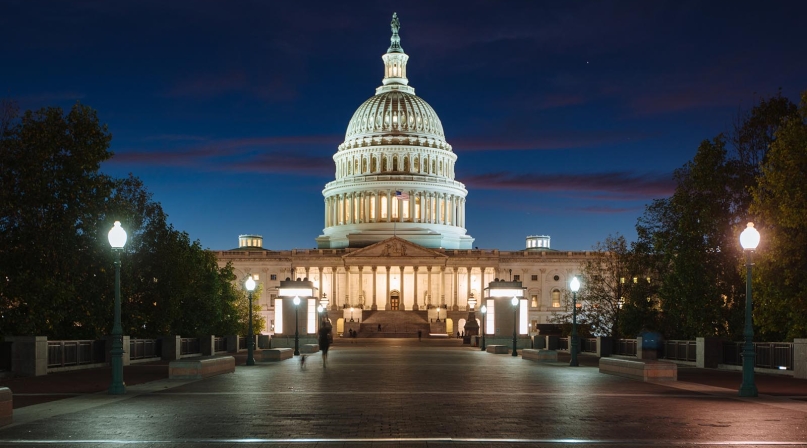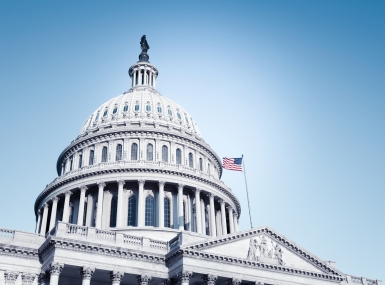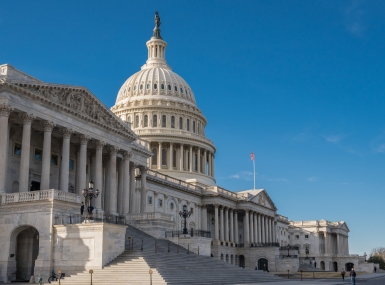New TANF proposal reshapes welfare program
Upcoming Events
Related News

Proposed legislation ramps up work requirements for TANF recipients
The House Ways and Means Committee passed legislation along a party-line vote May 24 reauthorizing the Temporary Assistance for Needy Families (TANF) program. The bill, Joining Opportunity with Benefits and Services for Success (JOBS) Act, would reauthorize TANF for five years through FY 2023 and fund child care and job training programs.
The legislation would significantly reshape the TANF program by expanding work requirements, establishing state performance metrics and modifying program transfers.
It was opposed by all Democrats on the committee.
Program funding for TANF is set to expire Sept. 30, although the program has been extended each year since reauthorization lapsed in 2010. Administered by the Department of Health and Human Services, TANF operates as a partnership between the federal government and states. Ten states share TANF administration with counties: California, Colorado, Minnesota, New Jersey, New York, North Carolina, North Dakota, Ohio, Virginia and Wisconsin.
TANF program funds can be used for cash assistance, as well as non-cash assistance and child care, job training and work supports.
The bill did not include any new funding for TANF – keeping the program’s almost $17 billion annual funding flat for another five years. This provision could become problematic as the bill works its way through the House and Senate because of the decrease of the actual value of the TANF program due to inflation.
Adjusted for inflation, the block grant’s purchasing power has been reduced by over 30 percent since it was enacted in 1996. Specifically, the proposed legislation would take the following steps:
Replace TANF’s work participation rates with a universal work requirement for all work-eligible adults. The legislation would require all work-eligible individuals to engage in work or work preparation activities for at least 30 hours per week for a single parent with children over 6 years old, or 35 hours per week combined for a two-parent family. Single parents with children under 6 years old would be required to work an average of 20 hours a week per month. Agencies would work with TANF’s work-eligible recipients to establish an individual opportunity plan outlining employment expectations and supports, among other provisions. In addition, states would have sole discretion to define work activities as long as they are consistent with current TANF provisions.
The proposal to expand work requirements to all work-eligible adults represents a departure from TANF’s current provisions, which require states to meet two work participation benchmarks: a rule that 50 percent of TANF families with work-eligible adults are engaged for a minimum number of hours per month in work activities in exchange for TANF benefits; and a provision requiring 90 percent of TANF families with two work-eligible adults engage in qualifying work activities.
Add new employment and earnings measurements to track states’ performance in transitioning TANF recipients into employment opportunities. Starting in FY 2020, states would be required to negotiate with HHS to develop performance metrics for TANF programs such as the percentages of work-eligible individuals enrolled in secondary schools or work-eligible individuals in unsubsidized employment after ending their TANF benefits.
States would be required to publish information on their program performance levels.
Modify TANF program transfers. The new bill would no longer allow states to transfer TANF funds to the Social Services Block Grant (SSBG) and would prohibit states from using TANF dollars directly toward child care or child welfare.
Looking ahead, if the bill goes to the House floor without Democratic support, it may still pass the House on a party-line vote. However, once in the Senate, the legislation may need to be altered to gain the 60 votes needed to pass the Senate and go to the president’s desk.
Valerie Brankovic, legislative assistant, contributed to this report.
Attachments
Related News

U.S. Congress begins work on budget reconciliation process: What this means for counties
The House and Senate Budget Committees have marked up Fiscal Year (FY) 2025 budget resolutions to initiate the budget reconciliation process to enact policy priorities without garnering bipartisan support, although the two chambers differ in their approach to drafting the legislation.
Panel: People in crisis need support, not handcuffs
Counties can better serve people experiencing a behavioral health crisis by engaging behavioral health specialists instead of law enforcement, experts told county officials at a recent meeting held at NACo headquarters.

Lawmakers reintroduce the Build Housing with Care Act
On January 30, Senator Ron Wyden and Congresswoman Bonamici reintroduced the Build Housing with Care Act. This legislation would establish a new competitive grant program under HUD intended to boost the supply of co-located child care facilities and affordable housing developments.